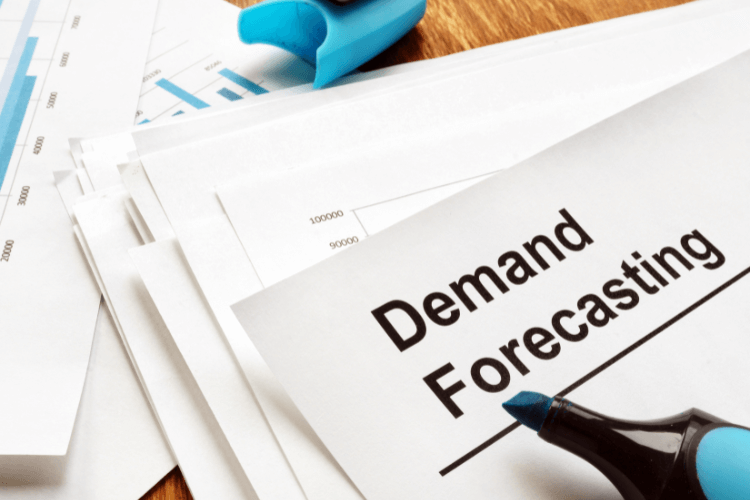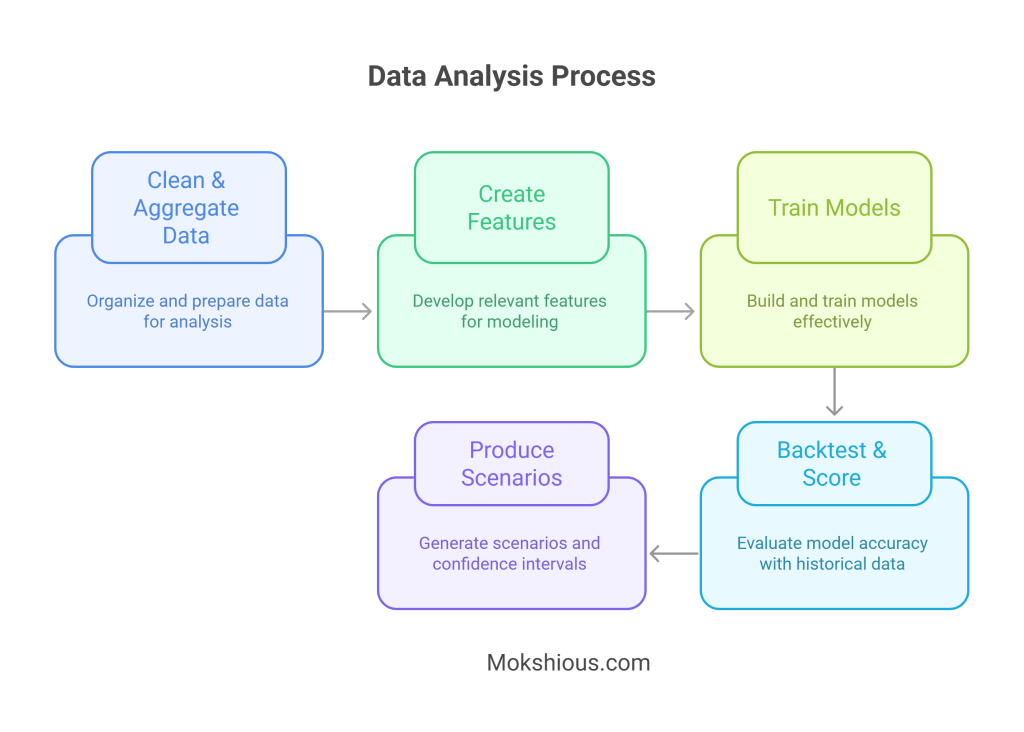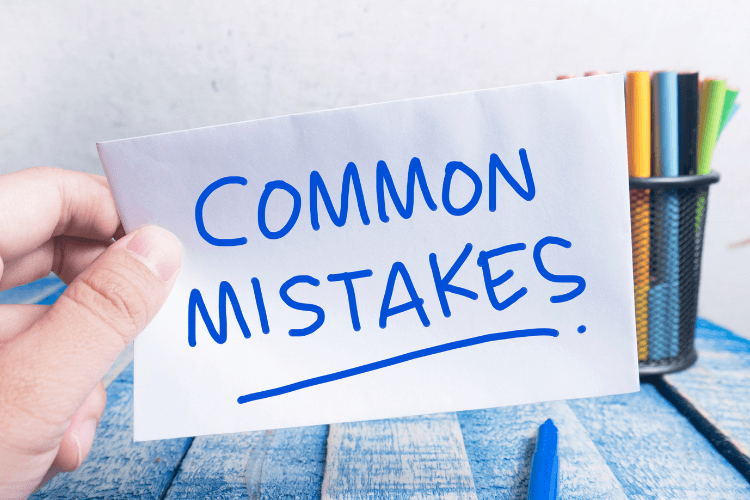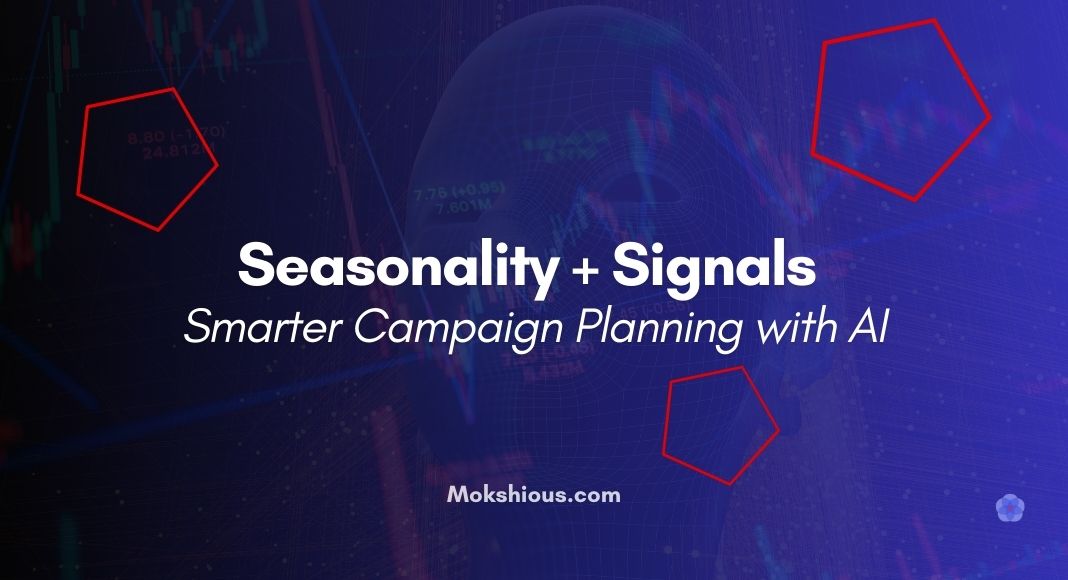When you hear people talk about demand forecasting, it can sound overly technical. But let’s keep it real: if you run campaigns without a clear demand forecast, you’re flying blind. Today, AI demand forecasting isn’t just for data scientists: it’s for marketing managers, growth leaders, and anyone who needs to align spend with customer behavior.
Think of artificial intelligence as your assistant in spotting demand patterns, adjusting for marketing seasonality, and pacing your campaigns with confidence. Done right, this process transforms supply chains, supply chain management, and even your campaign planning.
Why Forecast Demand Before Campaigns with AI?

Launching a campaign without a demand forecast is a bit like setting sail without checking the weather. Sure, you might reach your destination, but chances are high you’ll get caught in storms you could have avoided. In marketing, those storms look like wasted budget, low conversion rates, and a frustrated exec team wondering why your results don’t line up with the spend. That’s why forecasting before campaigns isn’t just a nice-to-have; it’s your safety net.
Avoid the Hidden Costs of Bad Budget Pacing
Most teams think their problem is low performance, but the real culprit is often poor pacing. Spend too much too early, and your budget dries up right before the demand patterns peak. Hold back too long and you miss opportunities when customer intent is highest. AI demand forecasting helps smooth this out by mapping future demand curves and aligning them with campaign timelines. You see not just when demand will rise but by how much, letting you set weekly or even daily caps that maximize ROI.
Align Creative and Inventory With Demand
Even the best ad creatives flop if they’re shown during demand troughs. Imagine dropping your flashiest Black Friday video ad on a random Tuesday in October, it won’t land. By using AI forecasting, you know when people are most likely to engage, so you launch campaigns at the perfect moment. This doesn’t just apply to ads. Forecasts inform supply chain management, too. If your supply chains aren’t stocked when demand spikes, you’re looking at lost sales and angry customers. A solid forecasting system helps teams prepare both creative and inventory for those critical windows.
Protect Against Panic Spending
If you’ve ever been in the last week of a quarter with numbers falling short, you know the panic-spend moment. It’s when marketing leaders dump money into channels just to show action, even though the forecast accuracy is low and the demand for products or services isn’t really there. These bursts rarely deliver results and often leave the team explaining why CAC spiked. A reliable AI-driven demand forecasting model gives you confidence to avoid these traps because you already accounted for seasonality adjustments, holiday effects, and even weather signals that might change behavior.
Performance Marketing as Forecasting Discipline
The truth is that performance marketing isn’t about one-off tactics anymore. It’s a discipline of measuring, predicting, and adjusting in real time. Artificial intelligence in demand forecasting takes the guesswork out and turns forecasting into a repeatable process. Instead of constantly reacting, you’re predicting. That means better demand planning, smarter budget pacing, and stronger alignment between channels, creatives, and the supply chain planning side of the business.
Building Trust With Stakeholders
Forecasting also buys you credibility. Execs want to know not just what you’ll spend, but what return to expect and when. Walking into a budget meeting with graphs showing projected demand shifts, supported by backtesting data like MAPE vs RMSE, changes the conversation. Instead of “we hope this campaign works,” you’re saying, “here’s our scenario planning, here’s the baseline, aggressive, and conservative paths, and here’s how we’ll adapt if demand fluctuations happen.” That’s the kind of planning that gets buy-in and repeat budget approvals.
The Competitive Edge
AI-powered demand forecasting is already being tested by rivals. AI forecasting is being used by retail behemoths like Walmart and Target to avoid out-of-stock situations, saving millions of dollars every quarter. You’re lagging behind if you continue to use antiquated demand forecasting techniques like intuition or last year’s data. AI-powered forecasting isn’t just about accuracy; it’s also about maintaining competitiveness in a market where predictive analytics is becoming the new standard.
Gather the Right Inputs for AI Demand Forecasting

Core Marketing Data
- Site sessions, leads, and revenue are aggregated daily.
- Campaign-level ROAS and spend metrics.
- Split branded vs non-brand searches, use the Search Console performance report.
- Historical promo calendars that reflect traditional forecasting methods.
Exogenous Variables
- Google Trends seasonality to capture shifts in interest.
- Public holiday effects, cultural events, niche observances.
- Weather signals that trigger changes in demand.
- PR spikes, competitor launches, or industry buzz.
- Competitor activity for demand sensing and marketing mix modeling.
Building a light data pipeline with these signals makes the demand forecasting process smoother.
Choose a Forecasting Path: AI Forecasting Models Good → Better → Best

Good (No-Code, Fast Baselines)
- BigQuery ML forecasting with ARIMA+ for a simple forecasting process.
- Amazon Forecast, Azure AutoML forecasting, and Vertex AI forecasting are UI-driven solutions.
- Great for quick forecast demand experiments without coding.
Better (Code-Light, Flexible)
- Prophet forecasting by Meta. Handles daily, weekly, and yearly cycles.
- Supports regressors like holiday effects.
- Easy to link results into Looker Studio or Sheets for planning dashboards.
Best (Feature-Rich, Battle-Tested)
- Add exogenous variables such as Google Trends or weather.
- Test multiple AI models with rolling look-back windows.
- Evaluate results with MAPE vs RMSE.
- This level delivers AI-powered demand forecasting with higher accuracy.
Build It (Step-by-Step Workflow to Implement AI in Demand Forecasting)

This is the part most marketers get excited about. You’ve done the research, you’ve pulled the signals, now it’s time to actually build the demand forecast. The good news? You don’t need to be a data scientist with a PhD. With the right tools, a little patience, and some guardrails, you can create a reliable AI demand forecasting workflow that feeds directly into your campaign planning. Here’s the step-by-step breakdown.
Step 1: Clean & Aggregate Your Data
Bad data in equals bad forecasts out. Start by aligning your datasets:
- Make sure everything is in the same time zone.
- Fill missing days with zeros or interpolated values.
- Keep granularity consistent (daily data is usually the sweet spot).
- Separate branded vs non-brand campaigns; mixing them skews your forecast accuracy.
Think of this like prepping ingredients before cooking. If your data isn’t tidy, even the smartest AI forecasting model won’t save you.
Step 2: Create Features That Actually Matter
Here’s where you add the seasoning. Feature engineering takes your raw numbers and turns them into meaningful signals for the forecasting model:
- Add holiday dummies to flag days like Black Friday, Diwali, or Cyber Monday.
- Build promo and price flags to capture the effect of discounts.
- Normalize Google Trends seasonality indexes so they scale with your revenue.
- Categorize weather signals (cold, rainy, heat waves) into bins that models can digest.
- Add lagged demand features; yesterday’s sales often predict today’s.
These exogenous variables are the secret sauce. Without them, you’re stuck with traditional demand forecasting that ignores real-world context. With them, you get AI-powered demand planning that actually reacts to customer behavior.
Step 3: Train Models the Smart Way
Now it’s model time. You don’t need to reinvent the wheel; the ecosystem already has great forecasting tools.
- Use ARIMA+ in BigQuery ML forecasting for a fast baseline. It’s SQL-friendly, handles time series forecasting, and supports backtesting.
- Try Prophet forecasting if you want flexibility with seasonality adjustments and holiday effects. Works well even with messy marketing data.
- Go with AutoML forecasting on Vertex AI forecasting, Amazon Forecast, or Azure AutoML forecasting if you prefer drag-and-drop over code.
Each option has trade-offs. Baselines like ARIMA+ are quick. Prophet lets you customize. AutoML feels magical but may act like a black box. Pick what fits your workflow.
Step 4: Backtest & Score for Realistic Accuracy
This is the step many skip, and it’s where forecasts fail. You need to test your models against the past.
- Use rolling look-back windows (e.g., train on 12 months, predict the next 2, repeat).
- Score with MAPE vs RMSE. MAPE shows percentage accuracy; RMSE punishes big misses.
- Compare models head-to-head. Sometimes Prophet beats ARIMA+, other times BigQuery ML wins, depending on your data.
Backtesting turns your forecast from a hopeful guess into a reliable forecasting system. If the model can’t handle history, it won’t handle the future.
Step 5: Produce Scenarios & Confidence Intervals
Finally, don’t just hand stakeholders a single number. Build three scenarios:
- Baseline, your best guess if conditions stay steady.
- Aggressive, if demand surges thanks to promos, PR, or viral moments.
- Conservative, if demand lags, competitors cut prices, or macro trends slow.
Layer in confidence intervals so everyone sees the uncertainty baked into the forecast. This kind of forecasting process builds trust, reduces surprises, and makes your demand planning far more actionable.
Turn AI Forecasts Into Media Actions

Here’s the thing: a demand forecast is only useful if it actually changes what you do in your campaigns. Too often, marketers stop at the pretty chart and never translate those predictions into action. Forecasts should drive budget pacing, Smart Bidding seasonality adjustments, creative scheduling, and even supply chain planning. Let’s break it down into the big levers you can pull.
Budget Pacing: Spend With Precision, Not Panic
Think of your forecast as a map of future demand. If the model shows traffic is going to climb 20% in week three, but dip in week one, why spend evenly across the month?
- Use the forecast curve to set weekly caps. Push spend into the high-demand windows and pull back when customer demand is flat.
- Example: In Q4, if your AI demand forecasting model predicts Cyber Monday will drive double the conversions, you shift more dollars into that week rather than wasting them in the lull after Thanksgiving.
This is where forecast accuracy pays off. Good pacing means better ROAS and smoother campaign planning.
Smart Bidding Seasonality: Train the Algorithm for Spikes
Google Ads’ Smart Bidding seasonality adjustments are designed exactly for this. Forecasts help you tell Google, “Hey, for the next 3 days, expect conversion rates to double because we’re running a big promo.”
- That prevents the algorithm from under-bidding during known spikes.
- It also helps avoid over-bidding during slow periods.
Pair your time series forecasting with Google Ads’ built-in adjustments so your bids match demand shifts, not just past performance.
Creative & Landing Page Timing: Hit When It Matters
Creative is expensive. You don’t want to burn through impressions when no one’s shopping. Forecasting helps you time launches:
- Drop seasonal creatives right before forecasted peaks (holiday campaigns, weather-driven products, or PR spikes).
- Pause or delay A/B tests during forecasted downturns; otherwise, you’ll get skewed results.
This is where predictive analytics meets storytelling. By syncing creative with forecasted demand fluctuations, you’re not just running ads, you’re running ads when people actually care.
Inventory & Customer Experience: Sync Marketing With Ops
This part often gets overlooked. If your ads are driving traffic but your supply chains aren’t ready, you lose sales. Forecasting helps you connect the dots:
- Share AI forecasting outputs with operations and merchandising teams.
- Make sure stock levels, delivery times, and support teams are ready for the peaks.
When supply chain management is aligned with marketing, the whole system hums. Customers get what they want, you hit targets, and nobody has to apologize for stock-outs.
Common Mistakes in AI Demand Forecasting

Even with the smartest AI demand forecasting models, marketers can still get tripped up if they misuse the process. Forecasts are only as good as the way you build, validate, and act on them. Here are the pitfalls to watch out for:
Mixing Branded and Non-Brand Data in One Series
This is one of the easiest mistakes to make and one of the fastest ways to destroy forecast accuracy. Branded traffic often behaves like a loyal baseline; it doesn’t fluctuate the same way as non-brand traffic. If you throw them together, the model can’t see the real demand patterns. Always split them into separate series before running time series forecasting.
Ignoring Holidays and Seasonality Adjustments
If your forecasting process doesn’t include holiday effects or seasonality adjustments, you’re basically pretending the world runs in a straight line. But reality? Spikes happen around Black Friday, Diwali, Prime Day, Valentine’s, and even weather-driven weekends. Forgetting these exogenous variables leads to missed peaks and wasted spend.
Overfitting With Too Many Variables
Yes, AI models can handle tons of data, but giving them everything, including noisy or irrelevant signals, creates fragile models. Overfitting means the forecast looks great on past data but fails in real-world campaigns. Stick to strong predictors like Google Trends, weather, promo flags, and leave out the noise.
Skipping Backtesting
A forecast that hasn’t been backtested is just a guess dressed up in math. Without rolling look-back windows and scoring methods like MAPE vs RMSE, you don’t know if the model is reliable. Skipping this step often leads to forecasting tools producing flashy charts that collapse the moment demand shifts.
Blind Trust in AutoML or “Black Box” Models
Platforms like Amazon Forecast, Vertex AI forecasting, or Azure AutoML forecasting are powerful, but they’re not magic. If you treat them like push-button solutions without checking forecast accuracy, you risk missing the nuances of your own data. Always validate their outputs against simpler baselines like ARIMA+ or Prophet forecasting.
Failing to Tie Forecasts to Actions
The biggest mistake? Building a great forecasting model and then doing nothing with it. Forecasts aren’t vanity dashboards; they’re a tool for budget pacing, Smart Bidding seasonality, demand planning, and even supply chain management. If you’re not acting on them, you’re just wasting time.
Conclusion: Improve Demand Forecasting Accuracy With AI Models
Forecasting is no longer optional; it’s the backbone of modern demand forecasting methods. By weaving in AI-powered demand planning, using forecasting tools like ARIMA+, Prophet, or AutoML, and paying attention to exogenous variables, you can improve forecast accuracy and meet customer demand.
So the playbook is simple: clean data, smart features, solid AI models, rigorous backtesting, and concrete media actions.
That’s how you stay ahead of demand shifts and run campaigns that actually hit.
